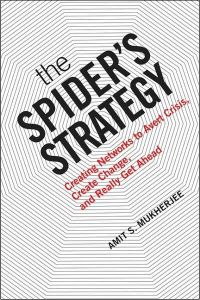Join getAbstract to access the summary!

Join getAbstract to access the summary!
Amit S. Mukherjee
The Spider's Strategy
Creating Networks to Avert Crisis, Create Change, and Really Get Ahead
FT Press, 2008
What's inside?
Your firm networks with many partners, but is your spiderweb strong? Are you prepared if disaster takes out a partner?
Recommendation
Dr. Amit S. Mukherjee, a brilliant corporate strategist, outlines why the networked structures that large firms rely upon can also create significant hazards for them if breakdowns occur. Given today’s interconnectivity, companies that cannot quickly adapt to their partners’ emergencies may themselves suffer catastrophic losses. Mukherjee details the four primary capabilities that networked businesses must possess and explains how to achieve them. getAbstract advises that senior and middle managers will profit from this thoughtful book and its instructive case histories.
Summary
About the Author
Amit S. Mukherjee, Ph.D., founded an executive-education and consulting firm. Previously, he was a faculty member at INSEAD and at Georgetown University.



















Comment on this summary